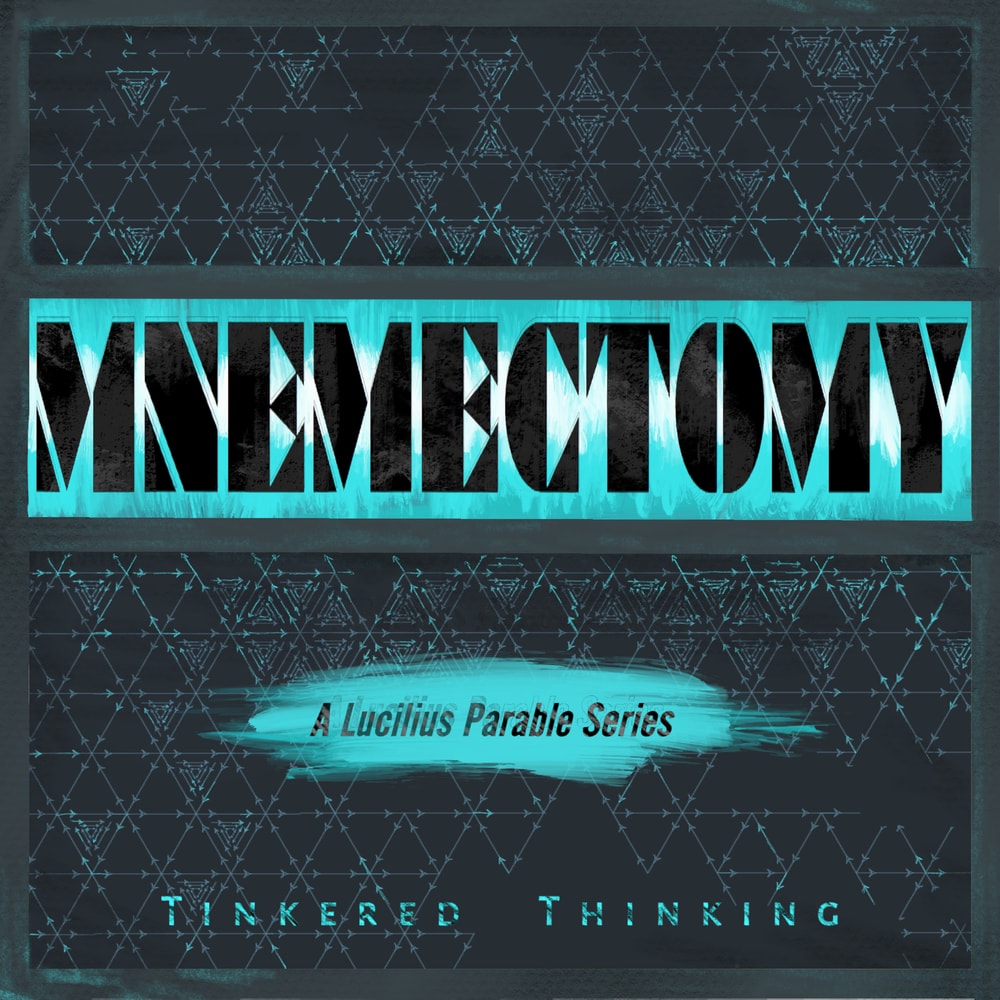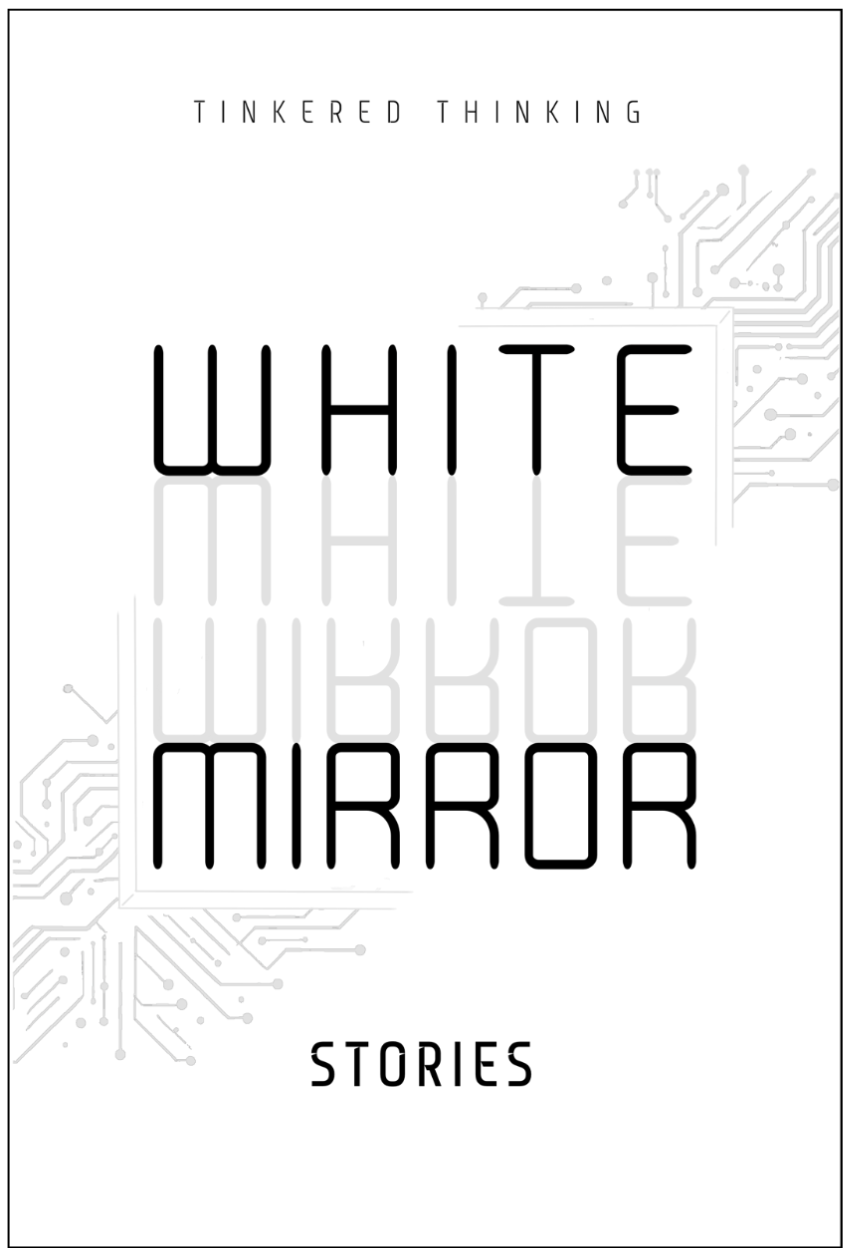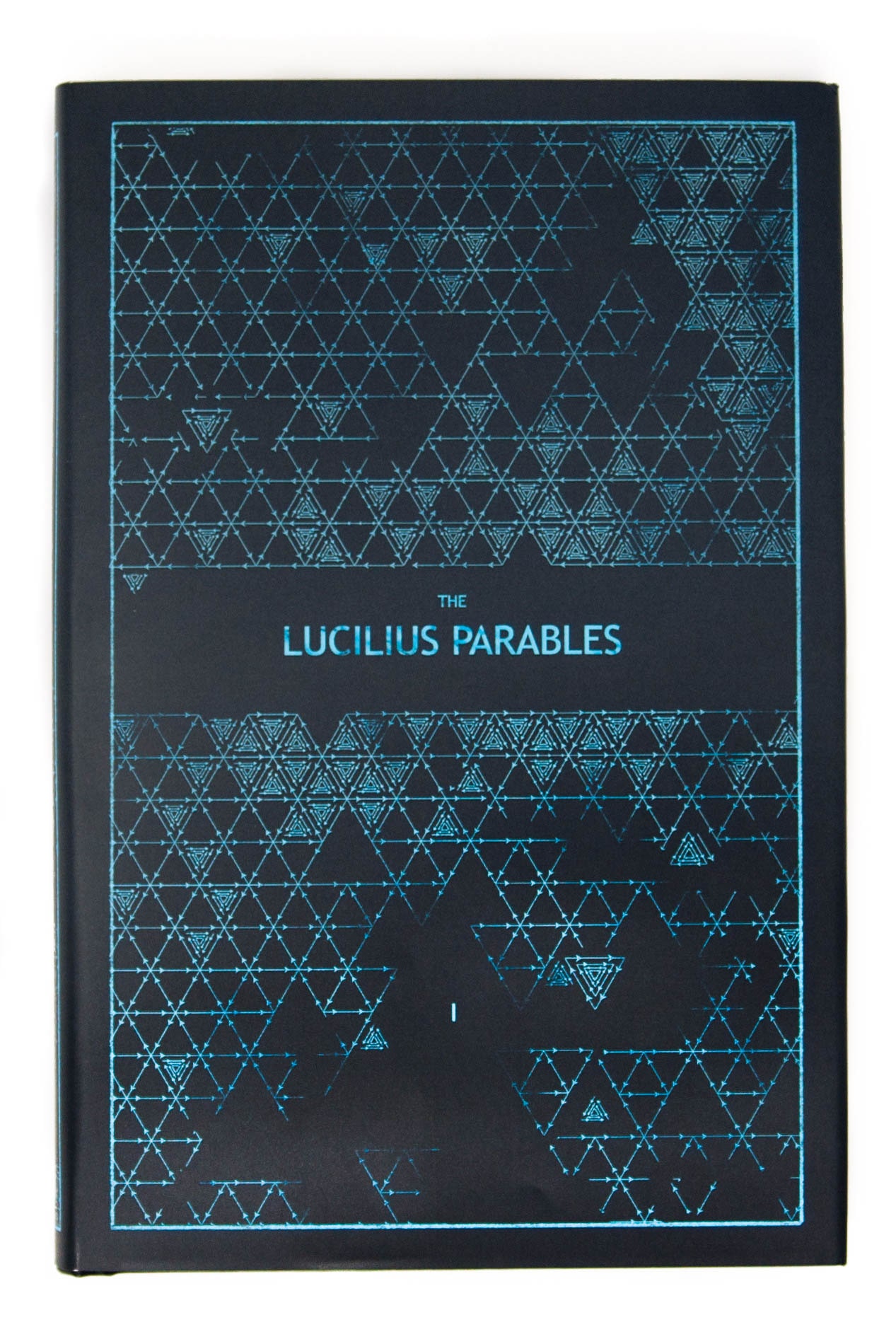Daily, snackable writings to spur changes in thinking.
Building a blueprint for a better brain by tinkering with the code.
subscribe
rss Feeds
SPIN CHESS
A Chess app from Tinkered Thinking featuring a variant of chess that bridges all skill levels!
REPAUSE
A meditation app is forthcoming. Stay Tuned.
ADAPTIVE BOREDOM
November 28th, 2020
Few people who haven’t trained for it can stand, let alone enjoy a few quiet minutes alone. Particularly if it’s unknown how long the quiet and the loneliness will last. The phone gets pulled out instead, the podcast gets turned on, the feeds are scrolled, email, texts - we now carry the ultimate cornucopia of stimulation with us wherever we go. One would think that we’ve finally conquered boredom, that it has been forever banished to the annals of the past. But this is certainly far from the truth.
Boredom has a strange and unappreciated utility. To sit down and ply one’s own mind with single focus upon a task is, somewhat boring before that subtle moment arrives when a sense of flow overwhelms the consciousness. The weird juxtaposition begs to wonder: what exactly is boredom?
Being in a flow state isn’t just productive, it’s fun. It can be incredibly rewarding, so why is it that we’re not always on the look out to try and dive into a spell of it? How is that work can be boring - even work that we generally claim to like, and yet something can flip and suddenly the subjective experience becomes quite the opposite? This is perhaps a question that’s impossible to answer with what we currently know, but our penchant for distraction has some likely evolutionary roots.
If an animal is single-mindedly focused on a task with no tendency or ability to be distracted from that task, then it becomes very very easy for a predator to sneak up on that animal and get an easy lunch. It’s likely that all such animals actually did become lunch, and those who were a little bit easier to distract noticed that predator in time to get away with their life, even if their task was left unfinished. Our penchant for distraction, whether it’s aided by the vibrant juvenile colors of a superphone or if it’s just our own internal pressure to switch tasks, the tendency might have some deep roots in survival.
The Darwinian world of natural selection doesn’t really optimize for the deeply contemplative creature, but civilization rewards for it, and it's only had cultural pressures to select for it. Those pressures are tepid compared to the brutalist culling of natural selection. It’s a wonder that we have the capacity at all to sit and work with single-minded focus of flow for hours and hours, blocking out all sorts of things, things that could potentially be dangers. If anything it’s likely that attention is operating on a few stratified levels that can maintain no crossover. Typing away in a café, it’s not difficult to get into a flow state, but if a car accident happens outside or if someone starts screaming at the barista, everyone is going to notice, flow state or not.
Attention might be thought of as a sort of pie that always has at least a couple slices. One of those slices was cut permanently, long ago, and is always scanning for danger. Our ability to pay attention after that is likely determined by how many of the remaining slices we can herd together onto the same topic.
Now if those remaining slices of attention have absolutely no capacity to endure boredom, how likely is it that someone can get into a flow state? Certainly such an individual has the capacity to be transfixed and hypnotized in order to avoid boredom, and if anything, a capacity to endure boredom determines the barrier to entry for deep focus. The transfixion of scrolling a feed on a phone is due to a pleasure adaptation. We get all these tiny dopamine hits as we search and discover for the new. But hedonic adaptation occurs. The dopamine response lessens, so we need more. And more. And soon enough, our incessant need for pleasure renders a person completely incapable of enduring boredom. The phrasing here is hyperbolic, surely, but not entirely.
Difficult work, especially learning or solving a hard problem is the exact opposite of the stream of dopamine hits that populate most of our phone usage. Difficult work isn’t just boring, it can be painful - at least at the start when the experience is likely accompanied with confusion and frustration.
But that adaptive change works both ways. Just as pleasure calls for more pleasure as it’s intensity dulls, so too is our capacity for boredom adaptive: the more boredom that is endured, willingly and with effort, the easier it becomes to handle that boredom. Eventually an individual can thrive in it by meeting that barrier to entry for deep work more often, and breaking through quicker in order to make the time count.
HIDDEN PRACTICE
November 27th, 2020
It’s just like riding a bicycle, but why? Some things certainly aren’t like riding a bicycle. Don’t solve a calculus problem for a decade and it’s not going to be suddenly obvious when one finally comes along (if it ever does). Most of the time, such experiences are more about a process of solution. It’s not just how did I do this back then? It’s how did I figure this out back then? Strangely, the process of discovery often provides a better way to wedge into the issue, perhaps because it’s a story and it simply has more potential points of memory when compared to the final conclusion. Remember one aspect of learning the skill and adjacent realizations are close on both sides of the timeline, and then it becomes like knocking down old sticky dominos until we’ve got it figured out again. But what about that bicycle? Why does that stick with us?
There’s an eerie similarity between the phenomenon of beginner’s luck and the ability to get on a bicycle after years of no riding and pedal away without an issue. If we don’t practice, how do we maintain the ability? As with everything that involves the brain and our abilities, you either use it, or lose it.
The trick is that we are always practicing the key skill for riding a bike, but that practice is hidden. Every day that we get up and walk or run or climb or jump or simply move the body successfully through space, we are exercising the Vestibular system. This is an ingenious little piece of the inner ear that looks like three rings glued together at the same point, but all turned at (roughly) right angles to one another. Altogether they form a trimensional organ that registers movement and acceleration in the three spacial dimensions. This is exactly what you need to stay balanced on a moving bike, and luckily, it’s getting it’s practice and exercise while doing anything else that requires balance.
Beginner’s luck, or what we might think of as innate talent probably functions on a similar trick a lot of the time. It should be little surprise when someone who is really good at water skiing finally tries the same on snow only to discovery they have a knack for it. In other situations the connections might be more subtle. Someone who spent a childhood playing chess might be able to do acrostics puzzles very quickly, Someone who spent a childhood playing with legos might have no problem fixing your espresso machine. The pairs might not be explicitly connected but success in both relies on subtler skills, ones that we might not even have names for, or ones that are generalized that we don’t immediately think of as requisite skills, like dexterity or spatial rotation.
In essence we have trained our whole life to become exactly the person we find ourselves to be today. It goes to wonder, will your training today contribute to a gift of ability for the person you’ll become tomorrow?
FORMATTING
November 26th, 2020
People will pay you millions to format something. This is what most of the current tech industry is entered around. Formatting is usually, or most commonly thought of as aligning paragraphs, choosing a font, deciding on page breaks, and certainly this is formatting. But what is going on in the most fundamental level here? Information, usually words, are simply being organized. The format of a book is an organization of words. It could be scroll. Or it could be a Facebook feed. The difference is that one is outdated and physically unreliable, whereas the other has a market cap of 784 Billion. But in essence, the only difference is… formatting.
Facebook formats the inputs of millions of people into a layout and structure that is “engaging” (for lack of a better word that perhaps indicates the insidious stickiness of the platform.). Imaginably, Facebook, or twitter or Linkedin could all be handwritten. But then, how would all that paper be compiled? In a book? This simply wouldn’t work. The evolution of the screen from TV to computer and then superphone enabled a complete reimagining of the sort of data structure which could handle gargantuan amounts of text and data.
The OED is a great example of the issue. The Oxford English Dictionary boasts a collection of 600,000 words from over a thousand years. The OED can be purchased as a physical book. It’s twenty volumes. Or, conveniently, there’s a digital version which doesn’t require 40-50 pounds of books. The OED can now fit in your pocket, but only because the formatting problem has been solved for modern times. Strange and perhaps sad that few people actually do have the OED in their pocket, but then again, Google does a good enough job when it comes to esoteric and grandiloquent vocabulary.
One way to discover a niche that can be made lucrative by tackling it with tech is to simply find a cannon of data that has yet to benefit from the reformatting possibilities promised by tech. Find a way to ingest this data programatically, and then make it available in a way that saves people time, or brings people delight. Boom.
Of course, as with everything, execution is far more important than the actual idea. Half a minute of hungover consideration by most people could rustle up a few billion dollar ideas that fall between the rails of these parameters. The difference, of course, is that practically no one ever shakes off the hangover, scrubs their eyes and hauls themselves through the excruciating and often tedious process of bringing an idea to life.
The old format “works” and like many traditions, regulations, and institutions that we rile against, they work well enough to keep from disturbing the tranquility of not being bothered to do something about it. Being bothered is relative of course. It’s never a question of being bothered, it’s always a matter of how bothered someone is. Enough to do something about it?
Not usually.
Formatting, or rather, reformatting is a fantastic way to look at innovation because it captures the essence of the task. Innovation, as a word, and as a concept, sparkles. It’s fresh, it has verve, it’s infused with hope and we all want a piece. On the other hand, no one is interested in reformatting. Formatting anything is generally a boring and fairly unsexy task. But innovation and formatting - in this context - are much the same, as eerie and odd as that might be. And the process of innovation is often tedious, and unsexy.... like formatting.
RHYTHM & MELODY
November 25th, 2020
In comedy, timing is everything. Launch the punchline a little too early, or after a long winded and exhausting set up, and a funny joke can fall flat. The key to comedy is realizing that it’s just story telling rigged up with a particular timing. Much like music. And so too in writing. Creating something that is both surprising and delightful (as opposed to surprising and off-putting) is a matter of variance and familiarity. Rhythm creates the familiarity. Surprise through variance is all in the melody, and the combination of the two weave a cognitive magic for the human ear.
Content is king in the age of the internet, but the age old adage stands divine: it’s not what you say, it’s how you say it. With so much creative history to stand on, almost everything written today is a remix of some sort, a rephrasing, a rehash with a fresh perspective. And strangely, the remixed song is often more successful than the original. Music is the perfect medium to explore this concept of how vs what because a listener can quite literally hear the cut and paste, and experience how well it does or doesn’t work. The same set of observations, however, apply to writing.
Write a piece that is composed completely of 70 word sentences and it’s likely going to be quite a long slog for the reader. Switch it up. Cut in short sentences. Offer some medium length grist to chew on. And suddenly, a piece of writing seems to take on a new dynamism, a bit of life that doesn’t exist in the purely long-winded treatment.
Writing an essay and telling a joke can take on helpful similarities around rhythm and melody. The story telling we call comedy is all about a rhythm that primes the mind for a perfectly timed juxtaposition that is unexpected but brings everything together. A great essay does something similar, but the connection to writing goes even deeper. The practicing writer hones for a feeling of rhythm and timing, improvising on the fly, like a jazz player, seeking something new. In essence, the writer of the essay tries to find the punchline buried within a set of curiosities. This is, of course what essay means - to try, in the same way jazz is -at heart- an attempt to create something new, fresh and delightful on the spot, spun from a deep sense of rhythm and melody.
The rhythm and cadence of words, clauses and sentences within an essay has a greater impact on the reader’s attention than perhaps anything else. Keeping the same tempo throughout is a bore. Like a piece of writing where every sentence is quite long. But shifting constantly at random can be as straining as a cat walking on a piano, jerking the reader’s attention around in a way that is anything but music.
There is a balance to be discovered, to practice and play with. And that’s really at the heart of it: to create something playful. That juvenile word perhaps captures it best: play is what is both surprising and delightful. It is the tradecraft of curiosity, and what so many adults seem to have such a hard time rediscovering - perhaps ironic considering play itself is a process of discovery. The genuine writer is little different than a kid in a sandbox, but the castles fashioned aren’t made of sand, but of words. The rhythm and melody discovered in those sonorous bits create a structure for the reader’s attention, much like the gaze of an onlooker that bounces from turret to drawbridge, spandrel and arch. With practice, play develops into an art. And then, with writing, a writer’s attention dances with the subject, so that the words might then dance with the reader’s attention.
ORIGINAL SOLUTION
November 24th, 2020
The first person to figure out how to ride a bike must have seemed a bit crazy. Apparently, the first verified person to accomplish this hallowed task was a Karl von Drais. Imagine the sort of trouble people have trying to find their balance on a bike, falling over and over before getting the hang of it.
A cute modern solution to this problem seems to have arisen in the last few years. Take the pedals off the bike, make it lower to the ground and then kids can safely walk the bike and pick their feet up for brief interludes until the balance for it comes online.
This innovation seems perfect and painfully so as someone who had to go through the unfortunate shock of having training wheels removed only to realize there had been no training with those training wheels. It had all been a fraud and oh, there was now scuffed up palms, a bleeding knee and an awkwardly situated helmet to deal with, not to mention the bicycle that seemed to have switched to being on the top position.
It was a rude awakening. So how did the first person manage to push through this learning curve and have faith that something that had never been done before could be done? Well it comes as a somewhat bitter surprise that the very first bicycle had no pedals. It was more like a glider. It had two wheels and it could be steered, but the primary method of getting it to go was either downhill or with one’s feet in contact with the ground, pushing it forward.
Perhaps our Karl von Drais didn’t look so ridiculous after all when that first fateful ride of the bicycle was undertaken. It’s that later innovation, of pedals and gears with a chain that actually got in the way of the first skill needed to ride a bike: balancing. Then the new and improved bicycle with it’s pedal propulsion system was simply shrunken down, pedals, gears and all, and it seems the utility of having no pedals was forgotten.
Does a little kid really need the ability to go faster? Certainly not. But now kids have a mighty hard time figuring out how to ride a bike, and so the truly insidious invention of the training wheel came about. Certainly it could be chocked up to one more way to profit off the enterprise riding bikes, but more likely it’s the result of a far simpler problem: creating something additional as a solution when the better solution is to simply take away the problem.
For the bicycle it requires either a knowledge of the history of the quaint machine or a thoughtful and circumspect understanding of the machine to realize that it doesn’t really need pedals and a chain for someone who is learning it - that is, to see the pedals and chain as an add-on that can therefore be removed.
What’s most important things to highlight about this sly set of developments is that it wasn’t clear how important the original simplicity of the bicycle was until you improve it, make it more complex and cover up the simplicity that made it so much easier to learn to ride in the first place.
-compressed.jpg)





